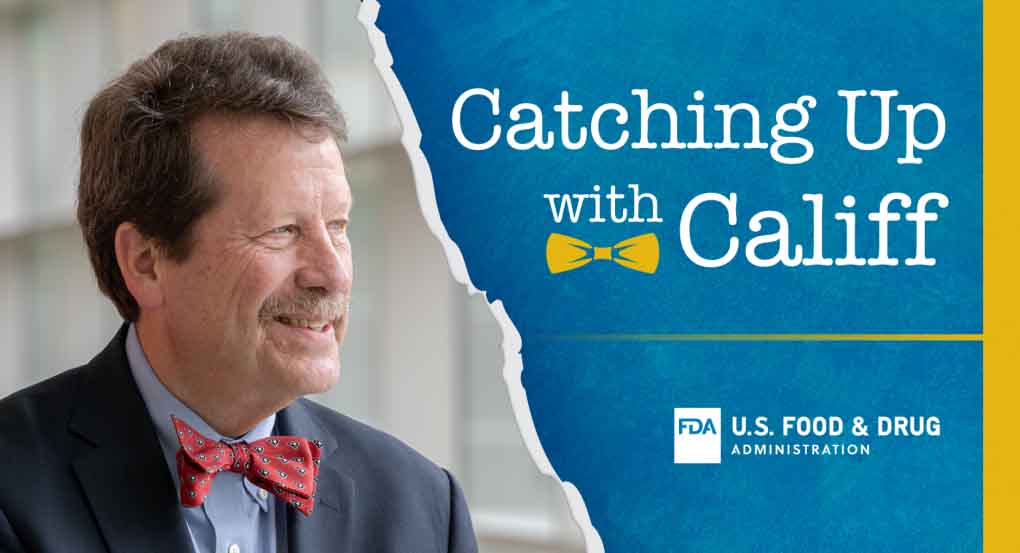Dr Robert M Califf, Commissioner of the US Food and Drug Administration (FDA), directed his column “Catching Up with Califf” at the allergic community last month, attempting to explain what went wrong when sesame was added as the ninth top allergen in January. [You can read his statement in its entirety below.]
As we all know, many manufacturers began adding traces of sesame to their products in order to list the ingredient on the label and avoid taking the extra precautionary requirements mandated by the Food Safety Modernization Act. The FSMA, which took effect in 2016, raised the prevention of allergen cross-contact to the same level of importance as the prevention of food-borne illnesses.
In “An Update on Sesame Allergen Labeling on Food Packages“, Califf makes a bewildering statement:
With the passage of the FASTER Act, the FDA and families with sesame-allergic members hoped that it would become easier for those allergic to sesame to feel more confident in their food choices with the clear label declaration of sesame as a major food allergen. I don’t think anyone envisioned there being a decrease in the availability of products that are safe choices for sesame allergic consumers.
No one envisioned it? Really? We did, and we issued a media briefing on this topic in 2016 when Kellogg’s started adding traces of peanuts to their Keebler cracker line in order to skirt new regulations introduced by the FSMA when it took effect.
Here is our warning verbatim:
We have reached a tipping point where the industry may decide that adding allergens to products in order to avoid the costs of implementing FSMA directives is in the interest of their shareholders. This will have catastrophic consequences for the allergic community, where many products that were previously acceptable for consumption are purposefully tainted.
We even sent a copy to the FDA at the time, so why would a massive cabinet-level organization with thousands of employees have been blindsided when history repeated itself?
Sorry, but the FDA was simply asleep at the wheel, and the car has already careened off the cliff. Nice driving, Louise.
Here follows Califf’s article in its entirety.
An Update on Sesame Allergen Labeling on Food Packages

By: Robert M. Califf, M.D., Commissioner of Food and Drugs
Millions of Americans have food allergies and may experience adverse reactions to products that contain food allergens. And while most allergic reactions cause mild symptoms, some are severe and may even be life-threatening.
Earlier this year sesame was added as the ninth major food allergen when the Food Allergy Safety, Treatment, Education, and Research (FASTER) Act became effective on Jan. 1, 2023. This means that sesame is now required to be listed on food labels as a major allergen. I want to catch up with you on this issue because allergen labeling is one of the most useful tools available to consumers with food allergies.
Manufacturers Adding the Appropriate Declaration to Their Labels
First, I want to acknowledge that we are seeing a number of manufacturers, after the FASTER Act, dedicating their facilities, space within their facilities, or equipment, as sesame-free. A number of others are using other procedures to reduce the risk of sesame being unintentionally included in their products by cross-contact. When sesame is present as an ingredient, we are seeing manufacturers meeting compliance by adding the appropriate declaration to their labels so that consumers can make more informed choices. These steps are having a real impact on public health by helping to make these products safe for consumers with sesame allergies.
Sesame in Products that Previously did not Contain Sesame
At the same time, we have become aware of a practice with an outcome we do not support. Some manufacturers are intentionally adding sesame to products that previously did not contain sesame and are labeling the products to indicate its presence. This keeps manufacturers in compliance with our law for disclosing the presence of a major food allergen, but limits options for consumers who are allergic to sesame.
With the passage of the FASTER Act, the FDA and families with sesame-allergic members hoped that it would become easier for those allergic to sesame to feel more confident in their food choices with the clear label declaration of sesame as a major food allergen. I don’t think anyone envisioned there being a decrease in the availability of products that are safe choices for sesame allergic consumers.
Finding Solutions to Meet the Needs of Consumers with Food Allergies
We also recognize there are some challenges with ensuring products are free of allergens, and we are meeting with both industry and consumer advocates to gain additional information and to hear the diversity of perspectives on this issue. The agency is interested in finding solutions, within our authorities, that meet the needs of consumers with food allergies, while also taking into account the practical limitations industry may be facing in implementing effective cross-contact controls and allergen labeling. Ultimately, we are looking for opportunities that could help consumers who are allergic to sesame find foods that are safe for them to consume.
Consumers should know that a food product’s ingredients can be changed at any time, so it’s a good practice to check the label every time you buy a food product – even if you have eaten it before and didn’t have an allergic reaction. We have made additional information available to consumers about sesame as an allergen through our Consumer Update.
Catch up with you next time.






